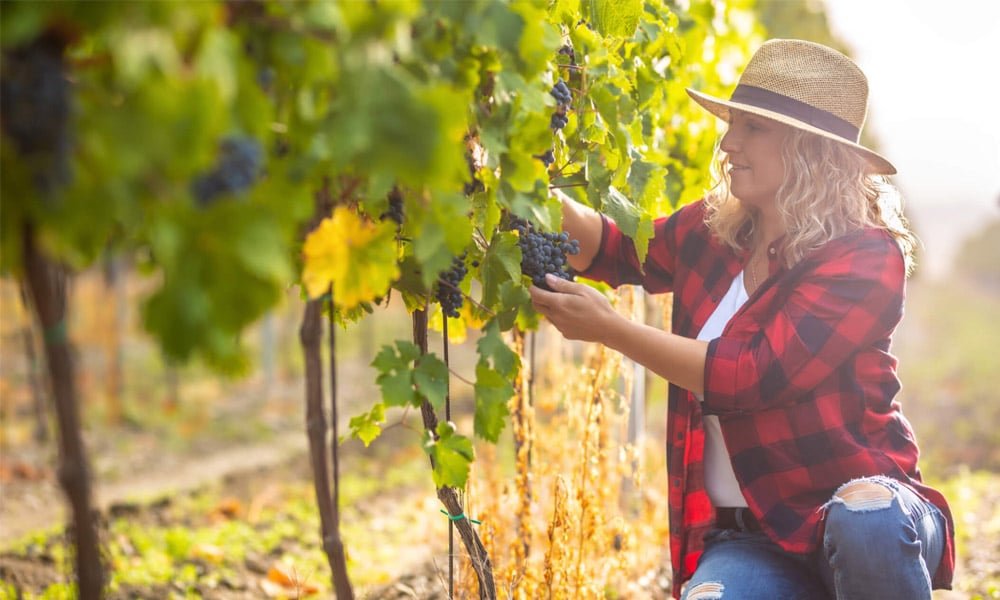Business
How to Start a Fruit Wine Factory: Complete Guide for New Producers
Published
3 days agoon
By
Alexander
Fruit wine has moved beyond being a niche craft beverage. Today, it stands as a fast-growing category in the global beverage market, powered by consumer trends toward natural drinks, farm-to-bottle concepts, and creative flavor profiles—berry wines, apple and pear wines, tropical fruit wines, citrus blends, and even mixed-fruit sparkling beverages.
Whether you are an orchard owner expanding into value-added products, a beverage entrepreneur launching a premium fruit wine line, or an investor building a commercial winery facility, this guide walks you through how to start a fruit wine factory step-by-step—covering strategic planning, regulatory requirements, equipment selection, staff needs, production workflows, and cost considerations. Micet Craft Brewing Equipment Manufacturers
Why Fruit Wine Production Is an Attractive Business Opportunity
Starting a fruit wine factory offers unique advantages:
✅ Rising consumer interest in alternative wines
✅ Ability to use local fruit or seasonal surplus
✅ High product customization (fruity, sweet, sparkling, fortified)
✅ Multi-channel sales: tasting rooms, retail, restaurants, e-commerce
✅ Lower competition compared to grape wine
Fruit wineries also attract tourism, community support, and eco-friendly branding opportunities.
But success requires proper planning and investment—especially in technology, sanitation, temperature control, and fermentation precision.
Step-by-Step Guide to Starting a Fruit Wine Factory
1. Conduct Market Research & Business Planning
Analyze:
- Local consumer demand (sweet vs semi-sweet vs dry fruit wines)
- Types of fruit available in your region
- Competing wineries / cideries / beverage makers
- Target markets (tasting rooms, retail shops, export, online)
Develop:
- Brand identity (heritage, natural, innovative, premium)
- Product strategy (still wine, sparkling fruit wine, fortified fruit wine)
- Pricing plan
- Distribution plan
- 3-year production and revenue forecast
A clear business plan makes funding and approvals easier.
2. Secure Fruit Supply & Develop Recipes
Decide whether you will:
- Grow your own fruit
- Partner with orchards or farmers
- Purchase frozen fruit, puree, or concentrate
Key considerations:
- Seasonal availability
- Consistency of quality
- Cost vs yield
- Pectin levels & flavor profiles
Develop trial batches to understand:
- Brix (sugar content)
- Acidity balance
- Yeast choices
- Nutrient additions
- Clarification strategy
- Aroma and sweetness levels
Pilot testing ensures market-ready flavor and quality before scaling.
3. Choose a Suitable Facility
Minimum factory requirements:
- Food-grade production space
- Floor drains and washable surfaces
- Temperature-controlled fermentation room
- Storage space for raw fruit & finished goods
- Utilities (water supply, power, ventilation)
- Loading/receiving area
- Wastewater management
You may also want:
- Tasting room
- Retail storefront
- Cold storage area
- Barrel room (optional for oaked fruit wines)
4. Obtain Licensing & Regulatory Approvals
Fruit wine production requires regulatory compliance regarding:
- Alcohol manufacturing permits
- Food safety standards
- Labeling regulations
- Sanitation certifications
- Excise duties & reporting
Regulations vary by region—contact your local alcohol control board and food safety authority early in planning.
5. Install Essential Equipment
Equipment requirements differ by scale, but a professional fruit wine factory typically includes:
Processing & Juice Extraction
- Fruit washer and sorting table
- Crusher / pulper / mill
- Pneumatic bladder press or hydraulic press
Fermentation Systems
- Stainless steel fermentation tanks (304/316)
- Glycol jackets and cooling controllers
- Temperature sensors and valves
Post-Fermentation
- Conditioning / bright tanks
- Plate & frame or lenticular filters
- Pumps, hoses, and fittings
- Laboratory testing equipment
Packaging Line
- Rinsing system
- Filling machine (vacuum or counter-pressure depending on product type)
- Corker / capper / crown capper
- Labeling machine
Sanitation
- CIP (Clean-in-Place) system
- Sanitary wash sinks and sterilizers
- Food-grade sanitation chemicals
Stainless steel equipment is recommended for durability, safety, and aroma protection.
6. Build a Trained Production Team
Roles for a small-to-medium fruit wine factory:
Role Responsibilities Winemaker / production manager Recipe, fermentation, quality Cellar staff Operations, cleaning, transfers Quality control technician Lab testing and monitoring Packaging & logistics Bottling, labeling, shipping Sales & marketing team Branding, distribution Compliance & admin Licensing, reporting
Fruit wine requires high sanitation and temperature control discipline, so staff should be trained in proper SOPs.
7. Establish Production Workflow
A typical fruit wine production flow:
Fruit reception → Sorting → Washing → Crushing → Pressing → Settling → Fermentation → Racking & clarification → Aging / stabilization → Filtration → Bottling → Labeling → Storage
Key goals:
- Minimize oxygen exposure
- Maintain precise fermentation temperature
- Prevent microbial contamination
- Optimize yield from each batch
8. Quality Control & Testing
Critical QC points:
- Brix and pH before fermentation
- Yeast selection & nutrient dosing
- Temperature during fermentation
- SO₂ management and stabilization
- Clarity and microbial levels before bottling
Basic lab equipment:
- Refractometer/hydrometer
- pH meter
- SO₂ tester
- Microscope (optional but recommended)
- DO (dissolved oxygen) meter for premium wineries
9. Marketing, Branding & Distribution
Fruit wine buyers respond to:
- Natural and fresh branding
- Local or farm-sourced ingredients
- Unique flavors (berry blends, tropical fruit, citrus wines)
- Attractive bottle design
- Food pairing suggestions
- Social media-driven storytelling
Distribution options:
- Winery tasting room
- Farm store or tourism network
- Restaurants & bars
- Specialty liquor shops
- Online sales (where legal)
- Seasonal winery events and festivals
Brand education builds loyal customers who appreciate the craft of fruit wine.
Typical Startup Budget
Scale Annual Output Estimated Investment Small / Boutique 5,000 – 20,000 liters $80,000 – $200,000 Growing commercial facility 20,000 – 100,000 liters $200,000 – $600,000 Industrial scale 100,000+ liters $700,000+
Cost depends on:
- Stainless tank size
- Automation level
- Packaging system
- Facility upgrades
FAQs
Q1: How long does it take to start a fruit wine factory?
Typically 6–18 months, depending on:
- Licensing and legal approvals
- Equipment lead times
- Facility construction or modification
- Trial batch development
Q2: Can fruit wine factories start small and scale up?
Yes. Many wineries begin with:
- 500–2,000 L fermenters
- Semi-automatic processing
- Limited seasonal batches
As demand grows, stainless tanks, chillers, and an automatic bottling line can be added.
Q3: What’s the most important equipment investment?
Stainless steel fermentation tanks with temperature control.
Temperature stability and sanitation define fruit wine quality more than any other factor.
Build Your Fruit Wine Factory With Micet Stainless Solutions
Launching a fruit wine factory requires durable, sanitary, and scalable equipment. Micet specializes in manufacturing winery-grade stainless steel tanks and turnkey fruit wine production systems.
Micet offers:
- 304/316 stainless steel fermentation tanks
- Glycol-jacketed cooling systems
- Bladder fruit presses
- Bright tanks and storage vessels
- Wine pumps, CIP systems, and pipelines
- Semi-automatic & automatic bottling lines
- Custom factory layout & engineering support
Whether you’re building a boutique fruit winery or a modern industrial facility, Micet provides high-quality, efficient, and customizable winery equipment trusted worldwide.
📩 Planning to start a fruit wine factory?
Tell me your target annual output and batch size—I’ll help you design the right Micet equipment package for your production goals.
You may like


VisualGPT AI Background Changer: Effortlessly Transform Your Images for Any Occasion

What to Expect When You Rent a Private Jet

Why Water Aerobics Certification is a Game-Changer for Fitness Trainers

Why Some Commercial Buildings Cost Less to Maintain Long-Term

Understanding LiFePO4 Battery Technology and Its Role in Modern Energy Systems

Best Rolex Super Clone Websites – Top Rated and Verified

Vintage Gaming Washed Hoodies at NerdyWave: 2025 Black Friday Sale Deals

What Parents Are Learning About Roblox the Hard Way

Beyond the Lowball Offer: Public Adjuster Services That Maximize Your Claim

Discover the Best Face Paint in Australia: Creative Faces’ Ultimate Guide

Carol Kirkwood’s Journey: Her Real Age, Husband, Career, and More

Revolutionizing Healthcare: The Emergence of AI-Driven Analytics

How Machine Learning and AI are Redefining the Future?

Aliza Barber: Meet Lance Barber’s Wife, Age, Life, Profile, Career and Net Worth

Evelyn Melendez: Jordan Knight’s Wife Bio, Marriage, Family, Career and Net Worth

Ilan Tobianah Biography: Family, Marriage, Lifestyle, Career and Net Worth

Who was Alice Marrow? Everything to Know About Ice-T’s and His Mother

King Von’s Autopsy Report: The Truth Behind the Tragic Death

Meet Otelia Cox: The Supportive Wife of Tony Cox – A True Fairy Tale Romance

Tea Leoni and Tim Daly Split – A Closer Look at Their Relationship and Breakup

VisualGPT AI Background Changer: Effortlessly Transform Your Images for Any Occasion

What to Expect When You Rent a Private Jet

Why Water Aerobics Certification is a Game-Changer for Fitness Trainers

Why Some Commercial Buildings Cost Less to Maintain Long-Term

Understanding LiFePO4 Battery Technology and Its Role in Modern Energy Systems

Best Rolex Super Clone Websites – Top Rated and Verified

Vintage Gaming Washed Hoodies at NerdyWave: 2025 Black Friday Sale Deals

What Parents Are Learning About Roblox the Hard Way

Beyond the Lowball Offer: Public Adjuster Services That Maximize Your Claim

Discover the Best Face Paint in Australia: Creative Faces’ Ultimate Guide
Category
Trending
-

 News2 months ago
News2 months agoCarol Kirkwood’s Journey: Her Real Age, Husband, Career, and More
-

 Health2 years ago
Health2 years agoRevolutionizing Healthcare: The Emergence of AI-Driven Analytics
-

 Technology2 years ago
Technology2 years agoHow Machine Learning and AI are Redefining the Future?
-

 Celebrity2 years ago
Celebrity2 years agoAliza Barber: Meet Lance Barber’s Wife, Age, Life, Profile, Career and Net Worth
